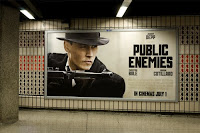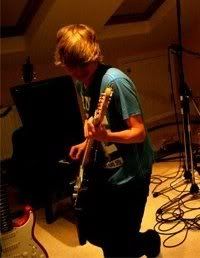It is with much regret that I close off this blog.
It has been a great experience and I hope to do something similar in the future,
Goodbye!
Wednesday, March 31, 2010
This blog is now CLOSED
Posted by LATYMERMEDIA at 3:08 AM 0 comments
Tuesday, March 30, 2010
Summary of our opening sequence
Posted by LATYMERMEDIA at 11:55 AM 0 comments
Labels: coursework, Evaluation, Summary of opening sequence
Monday, March 29, 2010
Evaluation: 7. Looking back at the prelim
Posted by LATYMERMEDIA at 12:40 AM 0 comments
Labels: coursework, Evaluation, Question 7
Evaluation: 6. What have you learnt about technologies from the process of constructing this product?
- We used Adobe Premier Pro to edit and construct our whole sequence
- I can now very confidently use multiple audio and video tracks in order to layer certain tracks over each other maximising the creative possibilities we had.
- I can quickly capture any footage off of our camera due to the ease of using a shot log and visual cues in our uncaptured footage.
- I can now use all the EQ settings in Adobe Premier Pro to cut out unnecessary high tones and boost lower frequencies to produce as nice a sound as possible in our audio tracks
- I used Adobe After Effects to try and track motion in some shots so that we could stick titles to surfaces. Although this was not used in our final sequence due to problems with finding tracking points I did manage to learn how it was done which will be useful when working on similar projects in the future.
- Having the role of director I can now direct a shot professionally by organising everyone including actors and camera operators.
- Having used blogger throughout the production process I have become very good at all technical aspects of blogging such as embedding videos and writing html codes to adjust page layouts.
- We used youtube very often to upload all our videos, this included our rough cuts, final sequence and behind the scenes videos
- We used Facebook to communicate about issues such as shooting dates and allocating tasks
We learnt to use the tripod in many new interesting ways. It was used for a few normal steady pan shots but was also used as an extension when filming track shots up the stairs
- Although I already knew about most of the technical aspects of filming and editing I am now able to do these much more efficiently and probably a lot better than before.
- Working with manual focus and exposure settings was a first and was really interesting because it definitely made our sequence noticeably look nicer.
- If I was ever doing this project this again I would experiment further with tracking motion and manual camera settings. By clearly placing tracking points in each shot tracking motion would be a lot easier and we could try focus pulling to create variety in shots.
- If i were advising other groups i would advise them to all be ambitious when using software and hardware because even if it ends up not working it is a very rewarding experience. Our tracking motion with titles turned out not to work but our use of manual focus and exposure worked very well
Posted by LATYMERMEDIA at 12:40 AM 0 comments
Labels: coursework, Evaluation, Question 6
Evaluation: 5. How did you attract/address your audience?
In order to attract our target audience of young males and teenagers we chose a mix of two genres that are extremely popular with these demographics. This of course was a mix of action and thriller to create an action thriller film.
This brainstorm shows a list of the themes, iconography, characters and narrative patterns that occur within action thrillers:
Here is a list of a few other elements included in our film to attract the target audiences as much as possible:
- This genre has been proven to work we stuck very closely to what an audience would expect from an action thriller because it has been proven to work over and over.
- Characters are from the same group as our target audience so are easily related to
- The film includes many emotional pleasures such as its ability to make the audience fearful and build suspense and tension
- Build up of enigma throughout the opening sequence, why is this young male being chased?, provokes intellectual participation of the audience encouraging them to engage try and figure out what is happening
- The film has a high budget feel which is much more popular among our target audience than low budget independent films
Here are a few screenshots showing all the themes included in our opening sequence:
Uses and Gratifications
- Our film includes mainly emotional pleasures to stimulate the audience. Our film targets the fears within audiences to make them feel scared and excited with all the action and suspense packed into the film.
- Our film includes some intellectual puzzles due to the amount of engima that is created throughout the opening sequence and encourages the audience to figure out what is happening
- Some parts of the audience may get pleasure out of all the different technology that is seen in the film later on
Marketing
In order to ensure as large of an audience response as possible a successful marketing campaign needs to be deployed that will appeal to the audience. Here are a few ideas on how that could be done:
- Advertisments on buses. These are typically used for film releases and are successful at reaching a broad audience
- A campaign on a social networking site such as Facebook. Since this platform of media is used by a massive majority of our target audience it will definitely raise awareness of the film
- Billboard posters. These again are very successful at reaching a broad audience
- Tie-ins with popular products such as Coca-Cola. Since this product is consumed regularly by most of the target audience it will definitely raise awareness of the film.



Posted by LATYMERMEDIA at 12:40 AM 0 comments
Labels: Audience, coursework, Evaluation, Question 5
Evaluation: 4. Who would be the audience for your media product?
Primary Audience
- Male
- Aged 15-30
- May not neccessarily be a film fanatic but enjoys going to the cinema
- Enjoys going out with friends, partying, gaming, sport and social networking
- May have an averagely paid job or may still be in education
- Girls of the same age that may enjoy action films or are taken to see the film by their boyfriends
- Older males who still enjoy action films or gaming
- Families with slightly older children
Posted by LATYMERMEDIA at 12:40 AM 0 comments
Labels: Audience, coursework, Evaluation, Question 4
Evaluation: 3. What kind of media institution might distribute your media product and why?
- 'AX Production's funded our film
- They are an institution known for funding high budget films with mass audiences
- Typically make action/adveenture films
- Perfectly suited our film due to the mass audience reach we tried to have and the genre of our film
- Similar to 'Sony Pictures Entertainment'

- Produce and disribute high budget films
- Most films produced are action films although some cross over into the family market
- Films produced include the Spiderman franchise and Men in Black
- 'Focus Entertainment' is the international distributor for our film
- They always handle films with a massive audiences and international releases
- Passed on the local distributing rights of our film to the UK distributor 'Infinite Pictures'
- 'Infinite Pictures' handles the local distribution of our film
- Having a local distributor as compared to a large international one is useful because they are more suited for a UK audience and will know how to target them effectively
- The relationship between 'Focus Entertainment' and 'Infinite Pictures' is similar to the relationship between 'Paramount' and 'Icon'
- 'Icon' takes on 'Paramount' films and distributes them to UK audiences
Posted by LATYMERMEDIA at 12:39 AM 0 comments
Labels: coursework, Evaluation, Institutions, Question 2
























